
Rigid-Flex PCB
Introduction to Rigid-Flex PCB
Rigid-Flex PCB combines flexible PCB (FPC) and rigid PCB technologies. It integrates FPC’s flexibility with PCB’s structural integrity through processes like pressing, creating a hybrid circuit board tailored for complex applications.
Production Process
Manufacturing Rigid-Flex PCBs requires both FPC and PCB production equipment. The workflow involves:
- Design: Engineers draft circuit layouts and shapes.
- Fabrication: FPC and PCB layers are produced separately.
- Assembly: Layers are pressed together seamlessly.
- Quality Control: Rigorous inspection precedes shipment to ensure reliability.
Definition and Core Characteristics
A Rigid-Flex PCB merges flexible and rigid circuit boards into a single structure, leveraging FPC’s bendability and PCB’s durability. This fusion enables adaptability to irregular shapes and high-stress environments.
Key Advantages
-
Durability in Harsh Conditions
Resists impact and vibration, ensuring stable performance in demanding settings.
-
High-Precision Reliability
Reduces failure risks in critical systems where connectors or cables might falter.
-
Space Efficiency
Eliminates bulky connectors, optimizing component density.
-
Cost-Effective Integration
Replaces multiple rigid PCBs with a single streamlined solution.
Primary Applications
-
Industrial and Medical Equipment
Precision instruments requiring accuracy, safety, and soil resistance.
-
Automotive Systems
Steering wheel controls, infotainment screens, sensors, and navigation modules.
-
Consumer Electronics
Advanced features in digital cameras (DSCs) and camcorders (DVs).
-
Mobile Devices
Hinge mechanisms, camera modules, and RF components in foldable phones.
Prototype Laminate Process Considerations
- Alignment: Precision in pre-lamination processing minimizes layer misalignment.
- Material Stress: Consistent glass cloth orientation and thermal stress relief prevent warping.
- Rigid Board Thickness: Optimal thickness (0.8–1.0mm) balances stability and economy.
- Flexible Window Milling: Laser cutting ensures clean edges without compromising structural integrity.
Manufacturing Workflow
-
Material Selection
-
Key Process Controls
- Inner layer graphic transfer
- Multi-layer flexible material alignment
- Laminating, drilling, and corrosion control
- Electroplating and solder mask application
-
Final Shaping
Design Guidelines
-
FPC Layer Placement
Prioritize inner layers for 8–10 layer boards (e.g., 4/5th layer in 8-layer stacks).
-
Bending Clearance
Maintain ≥1mm gaps between rigid and flex zones; ≥0.8mm between branch flex segments.
-
Wiring Principles
- Stagger adjacent layer traces to enhance flex life.
- Use arc transitions (≥0.5mm radius) at rigid-flex junctions.
- Avoid vias in flex zones; opt for grid copper in non-impedance-controlled signals.
-
Component Placement
Keep devices ≥1mm from flex zones; use arc routing for flex-zone traces.
Rigid-Flex PCB Stackup Example
A 4-layer stackup demonstrates layer prioritization for flex integration, balancing signal integrity and mechanical stress.
Adapters and Applications
Rigid-Flex adapters facilitate testing and structural modifications in industries like automotive, medical, and consumer electronics.
Cost Considerations
Higher production costs stem from material differences (thermal expansion, adhesion). Suppliers like UGPCB offer competitive pricing and end-to-end assembly services.
 UGPCB LOGO
UGPCB LOGO




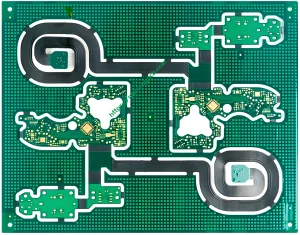
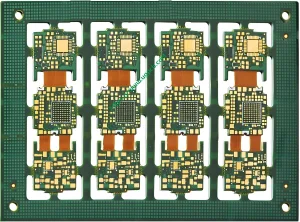
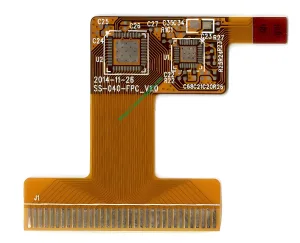
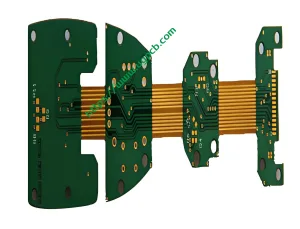
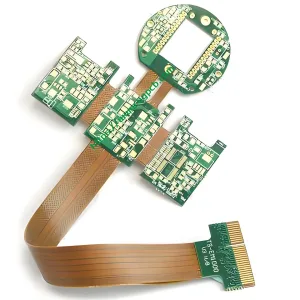


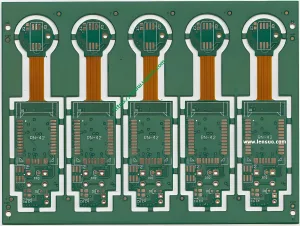
WeChat
Scan the QR Code with WeChat